Abstract
Studies of pigeon behavior in which magazine-cycle duration is varied suggest that many researchers assume that feeders of different designs dispense food at roughly the same rate. However, Epstein (1981) showed that, with a commonly used feeder, the amount of grain a pigeon consumes is a negatively accelerated function of magazine-cycle duration. The present experiment shows that, with a different commonly used feeder, amount consumed is roughly a linear function of magazine-cycle duration. At a duration of 60 seconds, the second feeder dispenses roughly 10 times as much food as the first. Thus, reports of studies in which magazine-cycle duration is varied should identify the design of the feeder employed, and in some cases, authors should consider determining the feeding functions for those feeders.
Full text
PDF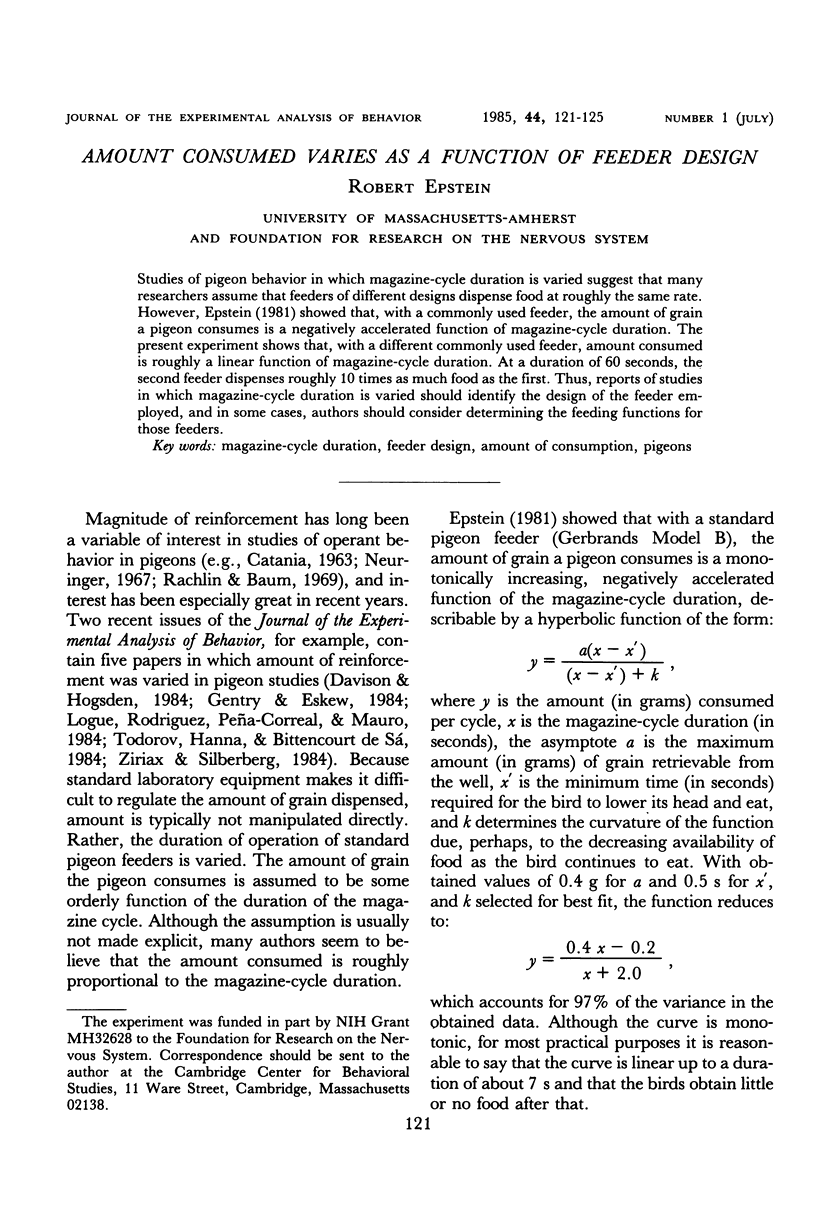
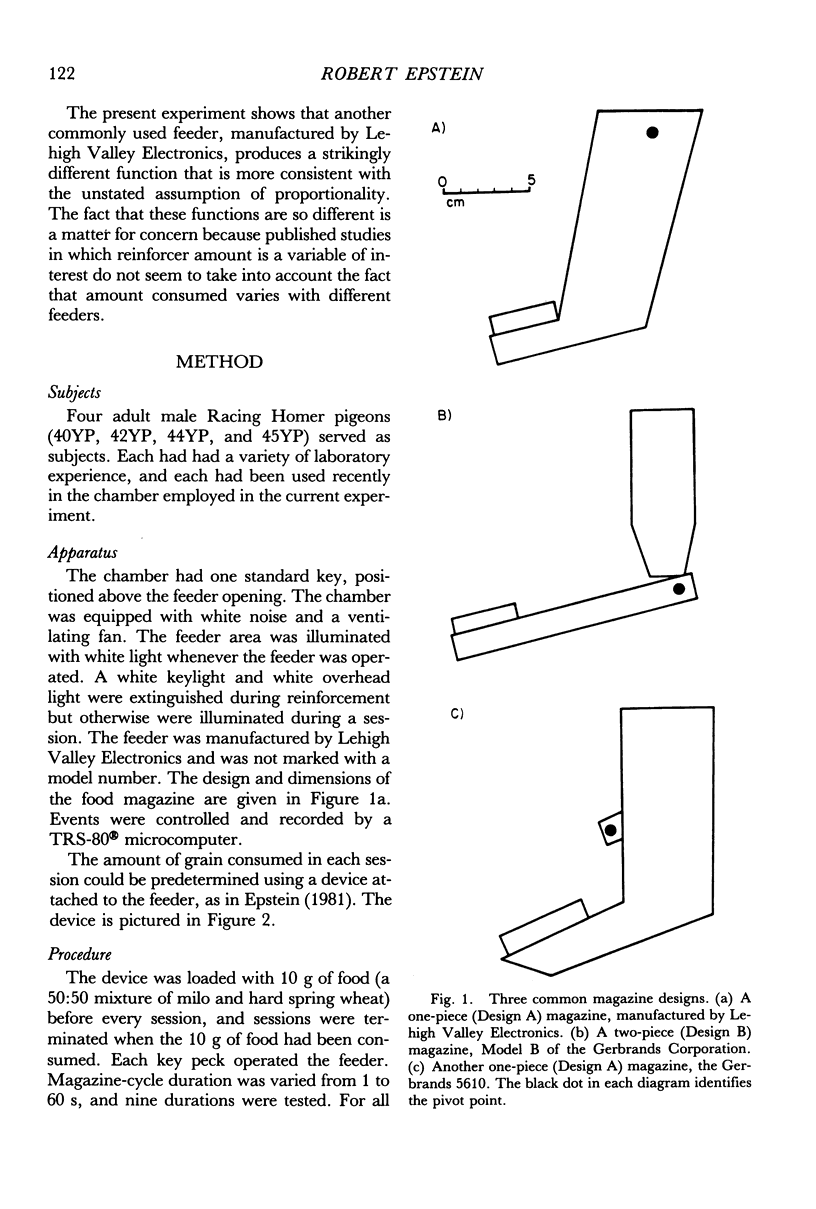
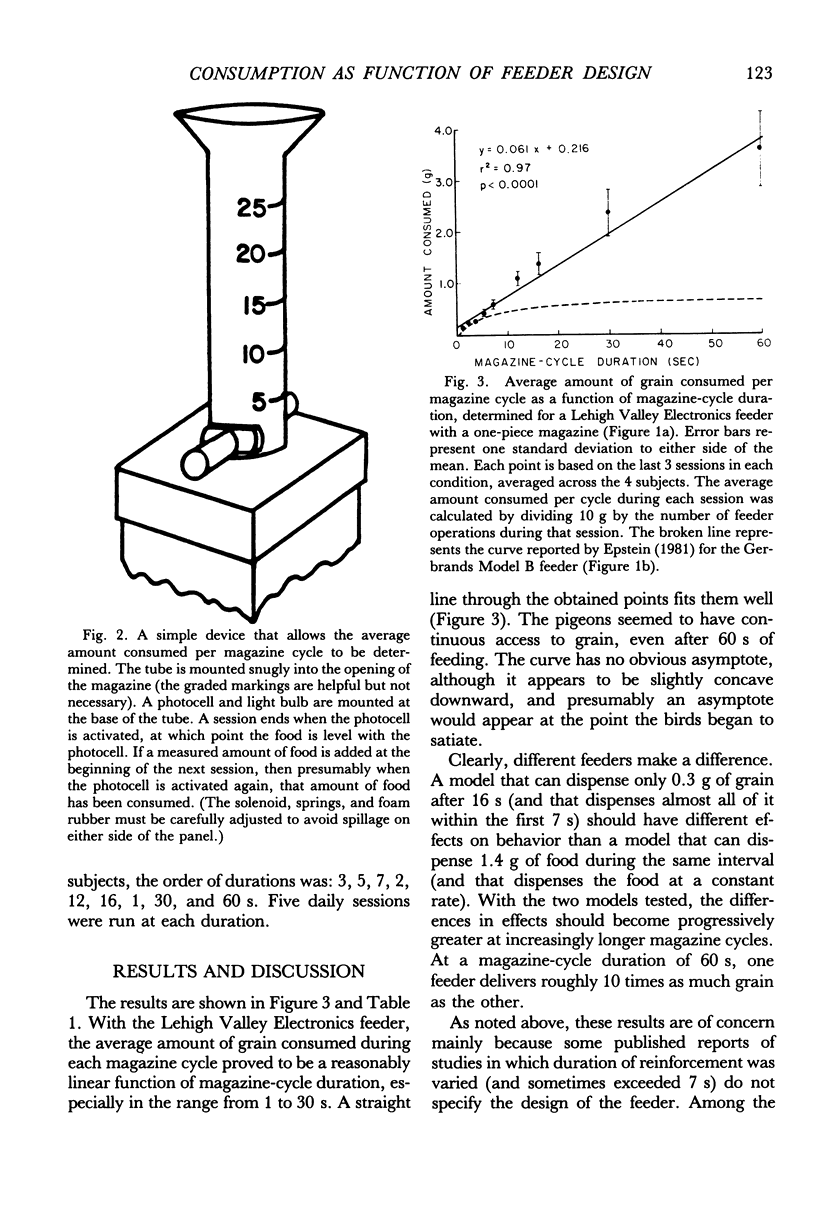
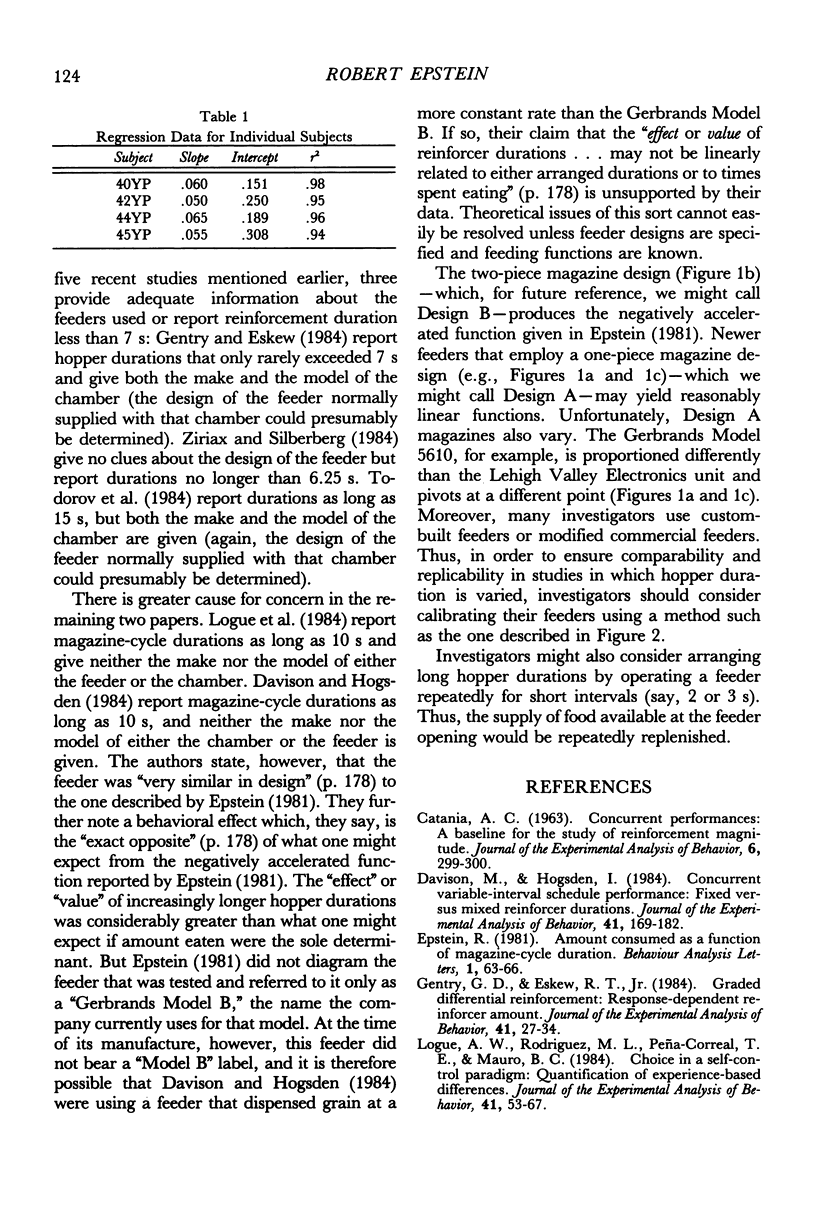
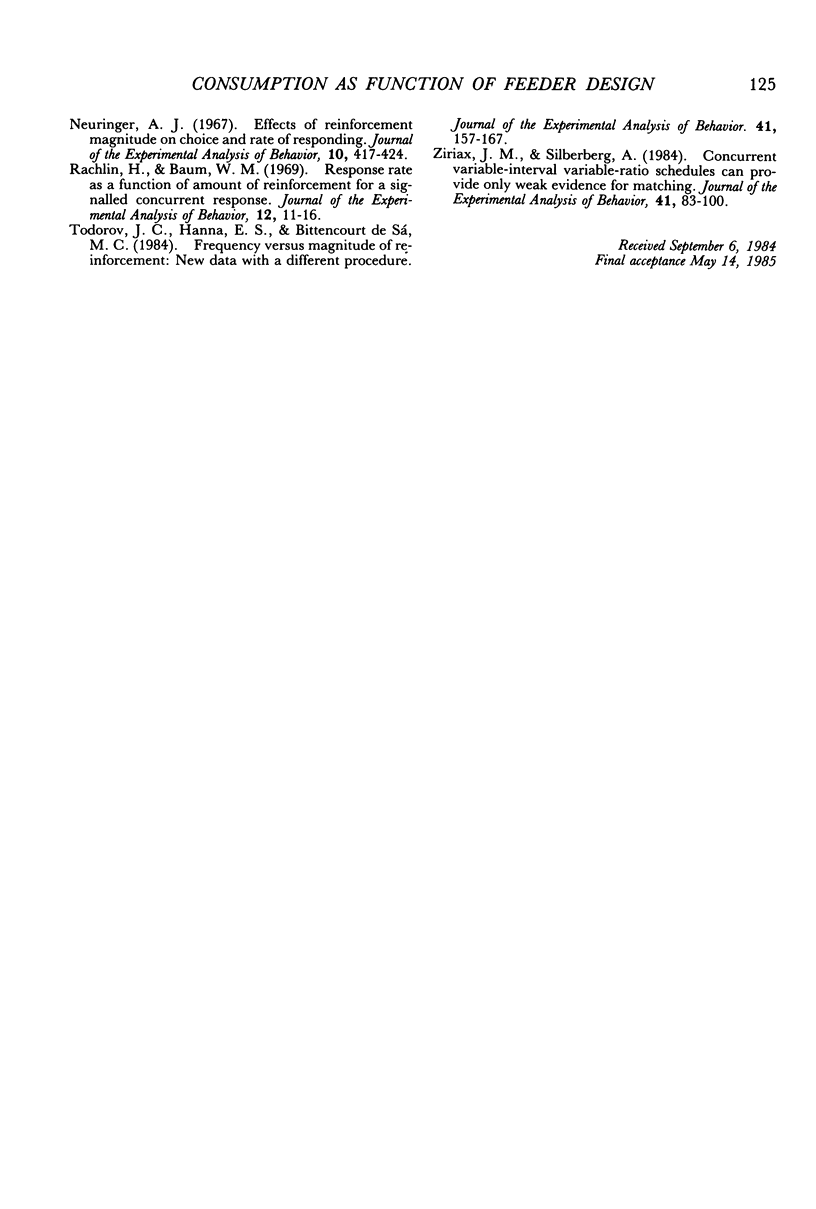
Selected References
These references are in PubMed. This may not be the complete list of references from this article.
- CATANIA A. C. Concurrent performances: a baseline for the study of reinforcement magnitude. J Exp Anal Behav. 1963 Apr;6:299–300. doi: 10.1901/jeab.1963.6-299. [DOI] [PMC free article] [PubMed] [Google Scholar]
- Davison M., Hogsden I. Concurrent variable-interval schedule performance: Fixed versus mixed reinforcer durations. J Exp Anal Behav. 1984 Mar;41(2):169–182. doi: 10.1901/jeab.1984.41-169. [DOI] [PMC free article] [PubMed] [Google Scholar]
- Gentry G. D., Eskew R. T. Graded differential reinforcement: Response-dependent reinforcer amount. J Exp Anal Behav. 1984 Jan;41(1):27–34. doi: 10.1901/jeab.1984.41-27. [DOI] [PMC free article] [PubMed] [Google Scholar]
- Logue A. W., Rodriguez M. L., Peña-Correal T. E., Mauro B. C. Choice in a self-control paradigm: Quantification of experience-based differences. J Exp Anal Behav. 1984 Jan;41(1):53–67. doi: 10.1901/jeab.1984.41-53. [DOI] [PMC free article] [PubMed] [Google Scholar]
- Neuringer A. J. Effects of reinforcement magnitude on choice and rate of responding. J Exp Anal Behav. 1967 Sep;10(5):417–424. doi: 10.1901/jeab.1967.10-417. [DOI] [PMC free article] [PubMed] [Google Scholar]
- Rachlin H., Baum W. M. Response rate as a function of amount of reinforcement for a signalled concurrent response. J Exp Anal Behav. 1969 Jan;12(1):11–16. doi: 10.1901/jeab.1969.12-11. [DOI] [PMC free article] [PubMed] [Google Scholar]
- Ziriax J. M., Silberberg A. Concurrent variable-interval variable-ratio schedules can provide only weak evidence for matching. J Exp Anal Behav. 1984 Jan;41(1):83–100. doi: 10.1901/jeab.1984.41-83. [DOI] [PMC free article] [PubMed] [Google Scholar]


